Aboriginal Outreach
Verna J. Kirkness Program Participants in the Department of Entomology

Each summer faculty members welcome aboriginal students into the Department of Entomology for a week to learn about entomology and about the insect fauna of Manitoba. Students learn about insect biology, collection, identification, and curation and then complete a small project based on what interests them most. In the past several students have chosen a 'favourite' insect from those that they encountered while collecting and completed fact sheets like the ones presented below. This valuable program allows aboriginal students to experience what it is like to work in science and to learn more about the natural world around them.
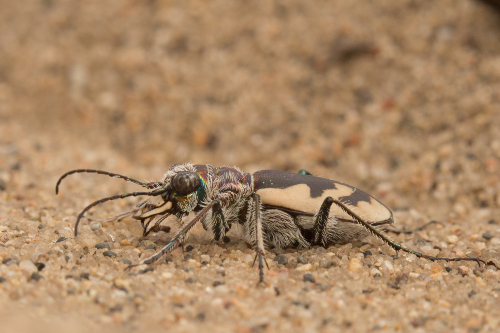
Tiger Beetles
By: Sayla Eastman and Hailey Bennett
(participants in the Verna J. Kirkness Program at the University of Manitoba)
In late May 2014, Sayla and Hailey spent a week in the Sharanowski lab in the Department of Entomology learning about insect diversity and taxonomy. For a week they were mentored by Dr. Barb Sharanowski, Melanie Scallion, Amber Bass, Pablo Fernandes, Udari Wanigasekara, Andres Herrea, Miles Zhang, and Derek Eyer.
Our week in Manitoba taught us how to research, classify, identify, and capture insects with our mentors. On the first day we picked out the insects we were going to research and focus our attention on for the week from the insect museum which holds 2 million insects, this number making it out to be a very hard decision for the both of us, so we spent some time to think about it. While we thought about it we learned how to pin and point and insects, which is a technique to preserve the insect. After deciding on our insects we went out into the field to learn how to set-up pan traps and pitfalls, and the technique to catching a insect with the net successfully catching a multitude of insects. We also learned how to use the biological identification system and how to use the microscopic imaging system. The following is the information we gathered and the photos we took of our chosen insect:
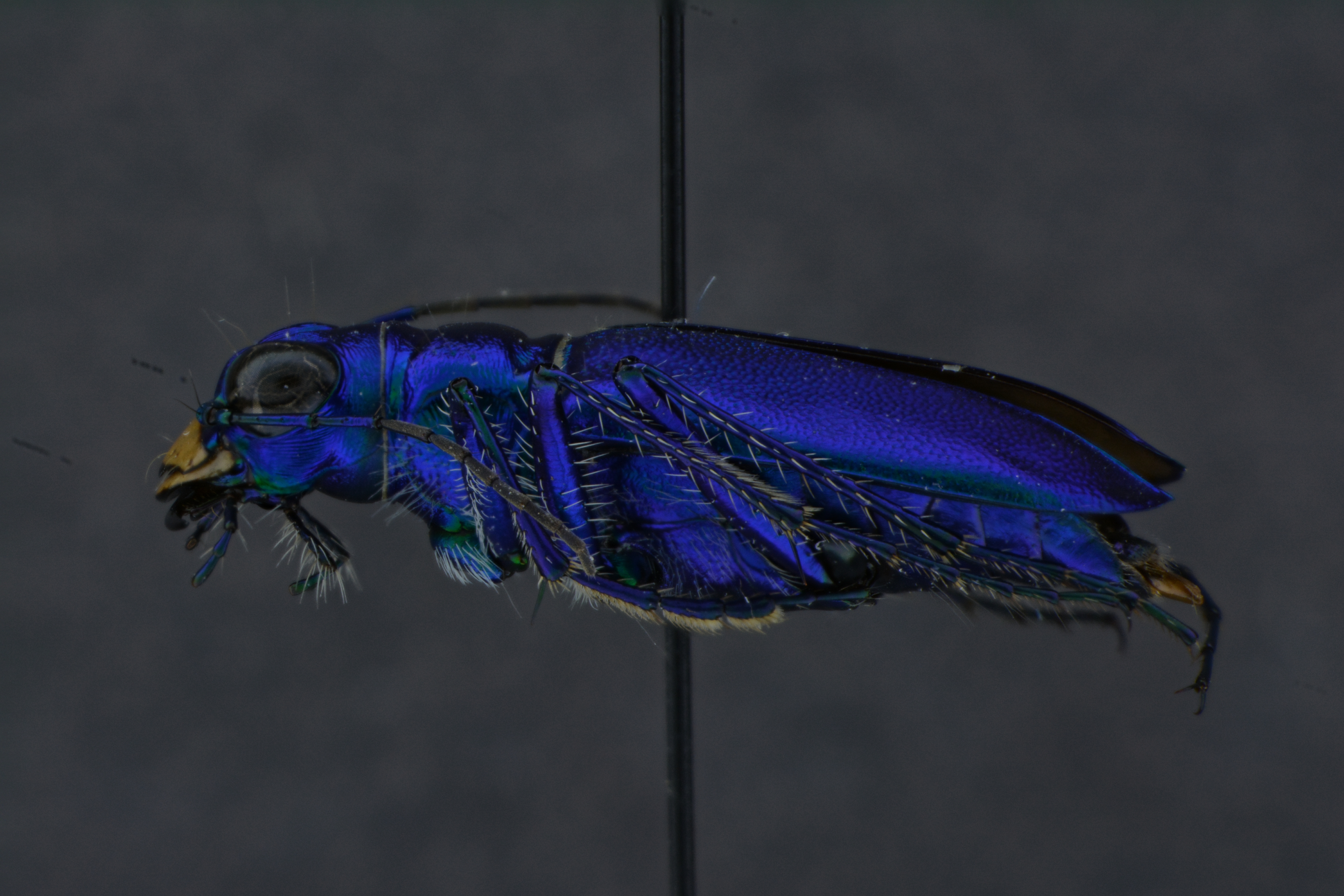 Tiger beetles (Coleoptera: Carabidae) are all different colors. They also have huge eyes and powerful legs. If you were to try and catch them bare handed you would have a hard time because how fast they run. They have large jaws, long and curved mandibles with a simple tooth sorted in the inner side of their mandible with a molar looking tooth in the inner parts of each mandible. Between the base of the mandible and the eyes, there is a long and thin antennae with 11 segments attached to the head. The body is approximately 65mm in length and the head is wider than the thorax. Tiger beetles vary primarily in size, colour, and mandible shapes. Some species are dull black, but some species are brilliantly emblazoned with bright green violet, blue, red, and yellow. Adults have transparent hind wings that are usually folder under hard front wings.
Tiger beetles (Coleoptera: Carabidae) are all different colors. They also have huge eyes and powerful legs. If you were to try and catch them bare handed you would have a hard time because how fast they run. They have large jaws, long and curved mandibles with a simple tooth sorted in the inner side of their mandible with a molar looking tooth in the inner parts of each mandible. Between the base of the mandible and the eyes, there is a long and thin antennae with 11 segments attached to the head. The body is approximately 65mm in length and the head is wider than the thorax. Tiger beetles vary primarily in size, colour, and mandible shapes. Some species are dull black, but some species are brilliantly emblazoned with bright green violet, blue, red, and yellow. Adults have transparent hind wings that are usually folder under hard front wings.
Tiger beetles have four separate stages of growth; egg, larvae, pupa, adult. Tiger beetles produce one generation per year, on average. After locating a suitable site, a female will lay between 30 and 60 oval eggs within the soil, or in the layer of plant residues on the soil surface. Protecting these egg sites is important because a young larva has a soft body, and is vulnerable to predators as it has limited mobility. Larvae live entirely under the soil surface, which is where they pupate after 3 larval stages. Adult tiger beetles can live between one and four years. Larger species as well as species which over-winter as tend to have the longest life spans. Tiger beetles have functional wings used primarily for dispersal, and they spend their entire lives on the ground. Tiger beetles are in the family Carabidae, which are also known as ground beetles. Some species are active only in the summer; others split their activity period into two seasons, the spring and the fall. The main difference between the spring species and summer species is in their overwintering stage, whereas the summer-active species die off as adults at the end of the summer. The summer-active species over winter only in the larval stage, spring-active species over winter as adults. But if these species require more than 1 year for development, they also over winter in the larval stage the first winter. Although larvae can also show either pattern of seasonal activity, the more constant environmental conditions of their underground tunnels make them more active throughout most of the year than the more exposed adults.
There are 17 distinctive habitats into which we can place almost all Tiger beetles. These include sand dunes, an ocean beach, or a hard wood forest floor. Most Tiger beetles are limited to a single habitat type and only a few species can occur in as many as 6 of the possible habitat categories Tiger beetles can be found in. The larvae tend to be even more restricted to habitat type than the adults do. Each habitat type is made up of numerous physical, chemical, and climatic components; those include soil composition, moisture, temperature, chemistry, vegetation cover, seasonality, and food supply. In addition, other habitat characteristics are important for mating and oviposition (laying eggs with little or no other embryonic developments within the mother) sites as well as hiding from parasites and predators. The ensemble of special adaptations that each species exhibits allows or restricts it to a unique range and type of habitats. Temperature is a critical part of the habitat for the Tiger beetles. Tiger beetles are largely dependent on external sources of body temperature to maintain their internal body temperature so that they can be active. They maintain their internal body temperatures just below their lethal limits of 39C in order to engage in much running and flying. This high internal temperature allows for maximum speed and movement. Different species of tiger beetles in the same locality can be active at and tolerate different maximum and minimum temperatures. These dissimilar capabilities in the same microhabitat may force species to be active at different times of the day and thus avoid competitors and predators. These physiological differences may also explain some of the differences in geographical range of species.
Tiger beetles can be considered to be opportunistic feeders that consume a variety of foods; however, the majority of Tiger beetles have been observed as primarily predatory, feeding on other insects and related organisms. Some locate food by random search, some hunt by sight, some hunt by chemical cues from snails and aphids. Females tend to have a more varied diet than males. A diversity of food types in females has been linked to larger egg size number. Adults and larvae typically have similar feeding habits; however, larval diets are more restricted due to a limited searching area underground. The natural larval diets are still widely undetermined. Laboratory studies have shown that Tiger beetles will eat everything offered. However, they typically show food preference and it is unclear whether or not these feeding habits are typical in nature. Prey preferences can change throughout their life cycle based on nutritional needs or a change in their resources.
Giant Water Bugs and Whirligig Beetles
By: Austin McPherson and Brandy Bird - participants in the Verna J. Kirkness Program at the University of Manitoba
In early June 2013, Brandy and Austin spent a week at the Entomology Department with the Sharanowski Lab, learning about insect divesrity and taxonomy.
Lab tech Phil Snarr and summer students Whitney Lodge-Zaparnick and Chalsie Warren helped mentor austin and Brandy during the week.
On day one we went to Falcon Lake to set up pitfall traps, catch butterflies and use dip nets to catch aquatic insects.
While sampling aquatic insects we managed to catch Dragonfly nymphs, Water beetles, Caddisfly larva, Water striders and even a Spider.
We spent the next day in the lab learning how to identify each insect to family, genus, and species.
We were then taught how to properly curate, label, and photograph each insect. After we were shown how to do everything, we both picked out our favorite insect out of the ones we caught, and took some great pictures using a microscope imaging system. The following is some of the pictures and info we gathered on each insect.
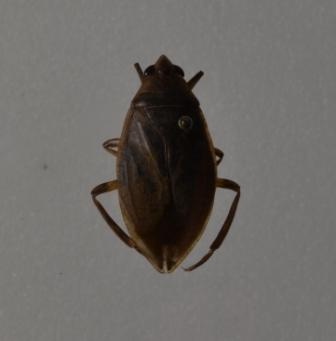

Giant Water Bugs
Water bugs are brownish, oval, flat insects with slightly flattened back legs and front legs which are designed for grasping prey. They have short , retractable terminal appendages. They eat various insects, frogs, small water birds and snails. Water bugs are ambush hunters that lay motionless waiting for prey to go by. They are found by fresh water streams and ponds or by street lights and porch lights.In the case of these water bugs, the females are not the ones that take care of the eggs they lay. Instead they lay the eggs on the males back who then is the one who takes care of the eggs until they hatch. The life span is one year or more and some can grow to be 4 inches (10 cm).They are attracted to lights and sometimes leave the water to fly around.
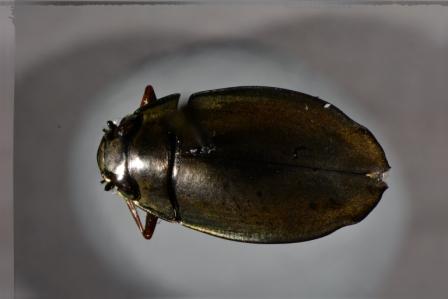
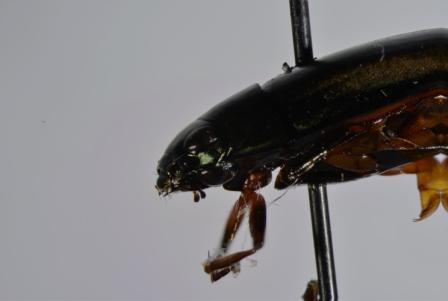
Whirligig Beetles
Gyrinide A.K.A Whirlygig beetles (Dineutus sp.) are small beetles that live in freshwater ponds and rivers. They often eat other insects but are also known to scavenge dead insects and plant material that float by. These beetles have a very effective way of spotting both prey and predators. They have two compound eyes that looks like they have four eyes, a pair on the top of their head and a pair on the bottom. This enables them to see both above and below the surface of the water. They have an interesting way of moving around. They suck air into their backside and shoot it out which propels them forward. They are often seen in large groups. Scientists think that this is their way of warning predators of the noxious chemicals forms in their body.Photo credits: Austin McPherson and Brandy Bird